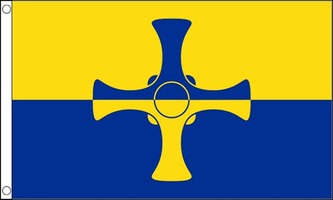
Before touching further on Wor Cuddy, let me first however reflect on Jesus’ words (in Luke 13.1-9), and those of the prophet Isaiah in our first reading today (in Isaiah 55.1-13). What Jesus is saying seems very pertinent for today. For in the first part of our Gospel reading, Jesus is clearly responding to those who are seeking meaning out of some terrible events of their day. Why do bad things happen to good people? We reach for meaning, don’t we? We look to perceive some pattern or purpose, particularly in seemingly pointless destruction. When bad things happen to bad people, or at least people who have caused great injury to others or themselves, we are less concerned. Yet, what about those apparently doing very little harm, and sometimes great good, to others? What about the deaths of young children, or vulnerable people, or those who have been greatly sinned-against, or those who embody great compassion? Where, we cry out, is the rhyme and reason? That question is also one of the major reasons for a loss of conventional faith in God.
a super-natural use for suffering?
Jesus, quite typically, does not answer that question. To be honest, I believe it is unanswerable. That is a core part of the great book of Job, which wrestles with unjust and disproportionate suffering. There is no simple human answer. Yet there is still the reality of God. What Jesus does is therefore to switch our attention, to ask a different question. Instead of ultimately useless concern about the whys and wherefores of life and suffering in general, he directs us back to our own way of living. No, Jesus says, quite clearly and firmly, so much of our human suffering is not caused by God, or some other supposed recorder of good and evil. Terrible things just happen. However, how will we ourselves live? Will we be consumed by fear and fascination about suffering, or will we seek life, seek God, where they can be found? The great English writer Dorothy L. Sayers used to put it this way. Christian Faith she said, does not give us a supernatural explanation for suffering… but it does give us a supernatural use for it – as in the sense of something more (‘super’) than the obvious and instinctive (‘natural’) responses by human beings.
tendencies to judgement
As in Jesus’ day, there are plenty of people inclined to blame others for sufferings. For example, it still seems to be a ‘natural’ thing for poverty, or other hardship, to be seen as the fault of those who bear it. We have even seen recent attempts by the powerful to blame flood and climate-affected populations for 'choosing' to live ‘in the wrong place’. There is still an assumption by many that living ‘a good life’ or a ‘religious’ life, should guarantee a longer and safer existence. Meanwhile wars, and other aggressions, are sometimes justified by some religious folk as the logical consequence of various supposed ‘liberal’ ideas and behaviours. The Bible itself wrestles with this tendency. This helps explain for example, how judgemental features are sometimes mixed up with other more life-giving things in biblical passages, including in parts of the Gospels. Christians too, as I have said, are also not immune to reading biblical passages with more judgemental eyes, much as Job’s comforters unhelpfully sought to interpret his sufferings.
the parable of the fig tree - judgement or mercy?
A classic case of potential misreading scripture must surely be the second part of our Gospel reading today, where the parable of the fig tree is interpreted as being about judgement. In stark contrast, I would suggest that it is actually quite the opposite. I think the parable of the fig tree is about mercy, waiting, and working with nature – above, ‘super’, our more instinctive knee-jerk reactions. For the key is who we think the man who plants the fig tree to be. Are they to be interpreted as God? If so, the parable does indeed quickly become about judgment. That is a common line of interpretation down the centuries. However is there any reason why the man has to be seen as God? It is likely, as with others of Jesus’ parables, that we have here a short version of what may have been a longer, and quite possibly interactive, discourse. Even so, there is no indication from Jesus that we are to see the man as God. Rather, it is just a story, into which we can read God, and judgement and mercy, in different ways.
What do you think? We do not have to make the gardener into God either, although perhaps we might reflect that it ‘the gardener’ is indeed a very powerful biblical name for the risen Christ. We can just read the story as a story, as Jesus more than likely intended. What then jumps out is the gardener’s encouragement to mercy, to waiting, and working with nature. Yes, he seems to say to the planter of the fig tree, and to others like him – yes, I understand your concern for the fig tree to bear fruit – but look mercifully, wait on nature, and work with it.
Now those who know about fig trees say that the gardener’s advice makes good agricultural sense too. A feature of fig trees is that they often take years to bear fruit. Like other plants and animals they have their own life patterns and rhythms. That may be hard for humans in a hurry to grasp, but it is reality. We can try to force the wider environment of which we are a part. We can blame it for not responding as we might like. We might even try to use its behaviour as a sign of judgement. However that is what humans have placed upon the wider environment, on plants and animals. They are not at fault as such. To draw further consequences for human behaviour only makes things worse.
embodying mercy
Do we see? As with other teachings, such as not hastily ripping out weeds, Jesus is surely encouraging us to a kinder approach to both human and more-than human husbandry. Like a good gardener of the soul, Jesus is asking us to cultivate mercy and patience, and to work with nature as our partner, not as our property. Stop imposing your own needs for meaning on life, Jesus says in the first part of our Gospel reading today. Stop imposing you own needs and expectations on other aspects of life, Jesus says in the second part. Note well indeed what follows. For it is almost always helpful to look at the context of a Gospel passage. Immediately after this section of the Gospel we hear today, Jesus goes on to heal a woman who had been crippled for 18 long years – embodying that mercy, and waiting, and working with the reality of life. The woman would have been like the fig tree for many – seemingly useless, and embarrassment, and source of judgement. Throw her away, people must have said. But that is not the way of God in Jesus.
living in the rhythms of God's Creation
Jesus’ way follows the similar encouragement marked out by the prophet Isaiah. Seek God, our first reading today says, and return to God so that mercy may be shared. For, as Jesus was saying, in both parts of our Gospel reading today:
my thoughts are not your thoughts, nor are your ways my ways, says the Lord. For as the heavens are higher than the earth, so are my ways higher than your ways, and my thoughts than your thoughts.
Significantly, the prophet continues with an analogy which expresses God’s life and work in terms of that of the more than human Creation. ‘As the rain and snow come down from heaven’, Isaiah says, watering the earth and helping it flourish, giving seed and producing bread, this is how the life of God works. In understanding this, humans too ‘shall go out in joy, and be led back in peace.’ Indeed, Isaiah then proclaims - in one of the most beautiful biblical expressions of the interrelatedness of God’s Creation - if we return our hearts to God and God’s pathways of mercy and creativity, ‘the mountains and the hills before you shall burst into song.’ God’s prophetic invitation is to return our hearts to abundant life, with all of Creation.
the witness of the otters
This divine ecological pathway brings us back to Wor Cuddy, Cuthbert. For, like many of the greatest saints, not least in the Celtic tradition, Cuthbert is intimately associated with the rest of God’s Creation. Almost invariably, he has indeed been closely portrayed with birds and animals, particularly those of the sea. There are many stories about this, some of them no doubt fanciful, but others perhaps more factual than we think, looking out, as we do, from our culture with such a greater immediate distance from the land, sea, and wider environment. The most famous story is that of Cuthbert’s encounter with otters. For Cuthbert had a practice – profoundly ascetic as it seems to most of us today – of standing at night in prayer in the sea. Even on a summer’s day, that sea, the North Sea, is very cold. It is said however that other monks noticed, on at least one occasion, that two otters came and wrapped themselves around Cuthbert to give him warmth.
Now, as I say, you can regard the story of Cuthbert and the otters as purely imagined. Yet it runs true with other stories - like those of St. Francis and the wolf, and St. Hugh and the swan – which, at the very least, symbolise the deep and intimate relationship between particular humans and the wider Creation in Christian spiritual tradition. More recent iterations of Christian Faith, it is true, have not exactly restrained the developments of human violence towards God’s wider Creation. Sometimes Christians have even seemed to be cheerleaders for them, as in debates over fossil fuels. Yet our longer, deeper, Christian spiritual traditions speak of very different relationships.
bridging the breach with God's Creation
Our readings today, like Wor Cuddy, therefore invite us to repair the human breach with God’s Creation through returning our hearts to God’s mercy and creativity. For our Lenten calling includes allowing the fig tree, the rain and the snow, the mountains and the hills, and the otters, to speak afresh to us and to help us share their own life and rhythms. Indeed they encourage us, like Cuthbert, in our own ways, to stand, literally and spiritually, within Creation itself. As another image of that, perhaps the main picture from our liturgy sheet cover may also help (see also below) For the bridge at Da Nang in Vietnam offers us a visual pathway in which we may walk together in harmony with God’s wider Creation. The hands are intended to represent the hands of God, and the walkway the thread of mercy and renewal on which we are invited to journey. Note well, how the hands, and the whole, increasingly become one with the wider environment – human ingenuity combining in listening and sharing with all that is, and allowing that wider life to minister to us, just as the otters did for Cuthbert, and the fig tree for the hearers of Jesus.
So may we walk that pathway of mercy and creativity, and know the comfort of otters and of all God’s creatures. Amen.
by Josephine Inkpin, for Pitt Street Uniting Church, Sunday 20 March 2022

 RSS Feed
RSS Feed